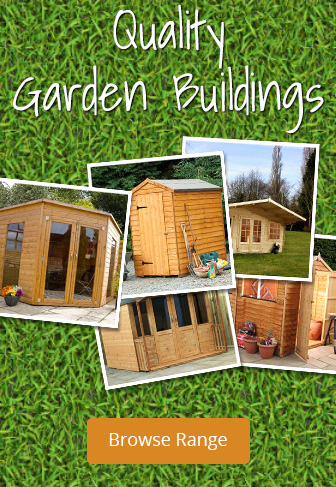How to Make Your Own Compost
Every garden can benefit from compost, but there’s nothing quite as good as making your own. It’s the ultimate form of recycling, as you’ll find out shortly. If you get it right, your garden – and your plants – will thank you for it.
What are the benefits of producing your own compost?
Firstly, you won’t need to buy any, so it will save you money in the long run. Secondly, you can recycle some of your household and garden waste yourself. This means you’ll have less to put out for the rubbish collection each week. Vegetable peelings, egg shells, coffee grounds and even teabags are all ideal to add to your composter.
You can also feel secure in knowing you are doing your bit for the environment. Your plants will fare better with freshly-created compost added to the soil they sit in. They’ll take vital nutrients from it, and leave you with bigger and better plants in the process.
Starting with a proper compost bin
Of course, before you can make compost, you need a bin to put it in so the ingredients can start breaking down into the compost you want to end up with. There are a number of products you can use for this, depending on budget and how you want the composter to look. You don’t have to opt for an unsightly plastic composter that will bring down the look of your garden!
If you want a quirky yet attractive look, a wooden compost bin is ideal. If the bin is going to be in full view, it can become a focal point in itself. A Rowlinson beehive-style wooden composter is a great example of how nice a composter can look.
Of course, when you start, it’s hard to know how much compost you will end up creating. However, if you have a large garden or you do a lot of gardening on a regular basis, it’s worth getting something that can grow with you. The Hartwood slotted compost bin has been designed for this very purpose. It’s made from pressure-treated softwood, so it’s designed to last. The corner posts are also designed so you can add further sections in the future if you wish. You cannot build upwards, but adding another compost bin on one side means you can move finished compost into that bin, allowing for more garden rubbish to be put into the original bin.
When you want to extend your original slotted bin, you just need to buy an extension kit to build another bin on the side. You can even buy two, to create a composter with three separate areas – ideal for big gardens.
Now you have your bin, choose a sunny spot to position it in. It doesn’t need a base – instead it should sit on bare soil. The sun will help heat the contents so they can break down and turn into compost. It helps to put some existing compost into the bin to get things started, too.
Your bin can take two types of items – green items and brown ones. Green ones include anything that will break down quickly and easily. This includes things like vegetable peelings and cuttings from the garden. The brown ones will include such things as paper bags, egg shells and even cardboard.
The idea is to get a mix that contains 50% greens and 50% browns in your bin. Never add bones, cooked food (even vegetables) or anything plastic into your bin. It’s well worth looking online for a more comprehensive list. You can always print it out and keep it in your kitchen, or wherever else you are likely to see it so you can see what you need to add or keep out. Once you get started, you’ll find it easy to get the right mix.
How to use your freshly-created compost

All your flowers, plants, fruit and vegetables will benefit from your composting efforts. It’s said that what you take from the earth you should put back. For example, your vegetables will take nutrients from the soil to help them grow. The same applies to anything else you grow. Homemade compost puts those nutrients back, so forking it into the existing soil may help produce some impressive carrots and runner beans this year!
You could also use your compost to help fill raised beds, if you have them. You’d be surprised how much you can grow in a single raised bed, like this Hartwood Large Raised Bed. You can give your homegrown veg the best possible start with the help of some fresh compost straight from your compost bin.
Starting a compost bin needn’t be difficult or time-consuming. In fact, it could well turn out to be the single best thing you ever do to help your garden flourish.





